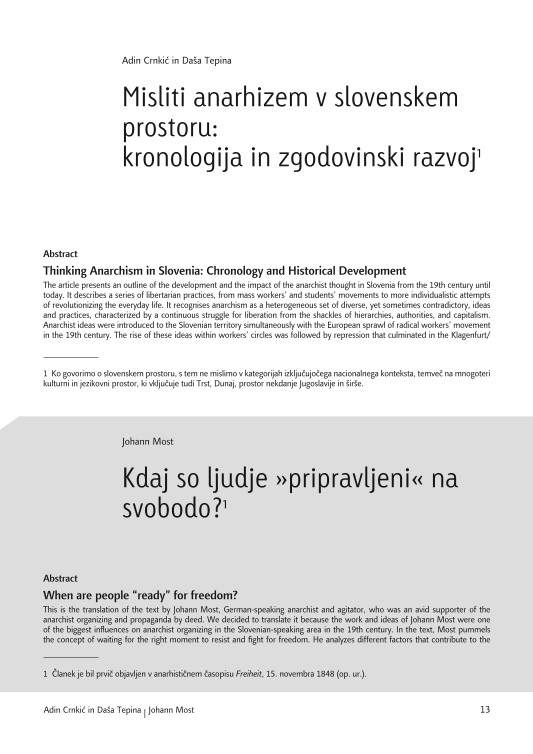The article presents an outline of the development and the impact of the anarchist thought in Slovenia from the 19th century until today. It describes a series of libertarian practices, from mass workers’ and students’ movements to more individualistic attempts of revolutionizing the everyday life. It recognises anarchism as a heterogeneous set of diverse, yet sometimes contradictory, ideas and practices, characterized by a continuous struggle for liberation from the shackles of hierarchies, authorities, and capitalism. Anarchist ideas were introduced to the Slovenian territory simultaneously with the European sprawl of radical workers’ movement in the 19th century. The rise of these ideas within workers’ circles was followed by repression that culminated in the Klagenfurt/Celovec trials, resulting in anarchism temporarily losing its strength. At the turn of the century, anarchism was spread mostly by artistic circles, whereas during both World Wars Yugoslav volunteers in the Spanish Civil War (španski borci) became acquainted with it abroad. During the sixties with the student movement, and especially in the eighties with punk, anarchism was present in squats, communes, and within occupied public spaces. At the turn of the 21st century, it flourished once again. The chronology of the development of this political thought, often marginalized in Slovenian historiography, shows that anarchism as a radical critique of society was always faced with severe repression. By revealing the historical flow of anarchism, the article offers key coordinates for further research on the topic.




